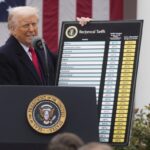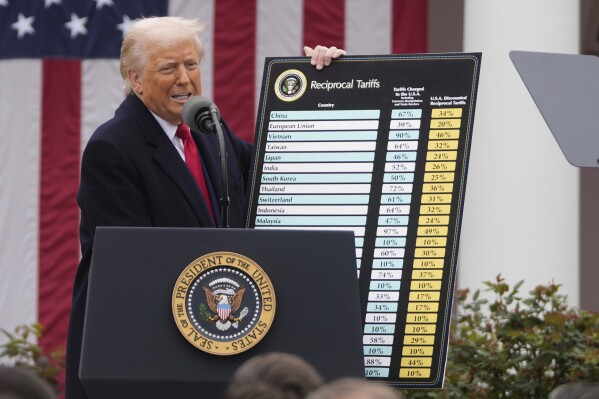Tariff news remains one of the most significant topics in global economics today. Whether they affect trade, energy, manufacturing or import-export relationships, tariffs shape how businesses operate, how consumers pay, and how governments respond. From new import duties to adjustments in energy pricing, recent developments under the phrase “tariff news” have far-reaching consequences. This article explains what tariffs are, which recent news stories are most important, how changes affect stakeholders, and what to watch ahead.
What Are Tariffs and Why They Matter
A tariff is essentially a tax or duty imposed on goods or services crossing borders—often when being imported into a country. Investopedia+2Oxford Economics+2 The purpose can vary: it might protect domestic industries, raise government revenues, or influence trade balances. Tariffs also matter because they raise costs, shift supply chains, and affect consumer prices.
Tariffs in Trade vs. Tariffs in Energy
In trade policy, tariffs apply to imported goods—like furniture, electronics, raw materials—with the goal of making those imports more expensive and thus less attractive compared to domestic alternatives.
In the energy sector, tariff news often refers to how energy is billed—rates for electricity or gas, standing charges, time-of-use tariffs. These are not import duties but rather pricing mechanisms which consumers pay for usage.
Understanding these nuances helps in interpreting what “tariff news” means in different contexts.
Recent Tariff News Highlights
Several recent stories illustrate how tariffs are evolving and what they mean for economies and households.
Trade Tariffs: U.S.–China and Beyond
One major story involves the U.S. and China. New tariffs have been imposed on a variety of goods, creating ripple effects for global supply chains. For example, products from China face overlapping tariffs and duties in 2025 making some rates extremely high. China Briefing+1 These moves drive cost increases and can shift trade flows.
Energy & Utility Tariffs Affecting Households
Domestic tariff news often concerns energy bills. In the UK, the energy regulator Ofgem has announced changes to standing charges and tariff structures for electricity and gas. One recent move requires suppliers to offer at least one tariff with a lower standing charge, though the unit rate may increase to compensate.
Another story: households on standard variable energy tariffs in the UK are set for higher average bills due to a rise in the price cap.
Tariffs and Clean Energy Supply Chains
Tariff measures are also deeply affecting clean energy industries. Import tariffs on components like batteries or solar panels are driving up costs for renewable energy deployment. For example, new U.S. tariffs threaten to raise costs for lithium-ion batteries and solar equipment. TIME
These types of tariff news show how policy choices affect not only trade but future energy and environmental strategies.
Impacts of Tariff Changes
Tariffs don’t just appear on paper—they create real effects for businesses, consumers, and the economy.
For Consumers
Tariff changes can raise the price of imported goods and therefore increase everyday costs. For example, when energy tariffs change or standing charges increase, households feel the burden. Tariff news about hikes in bills or changes in billing structure means consumers must adapt.
Example: The average UK dual fuel bill rising to £1,849 as a price cap increase. The Sun
Consumers may need to compare tariff plans, shift usage to off-peak hours, or adopt energy-saving habits.
For Businesses and Industry
Businesses that rely on imports or export goods are highly sensitive to tariff announcements. When tariffs rise, input costs grow and supply chains may reconfigure. Trade tariffs can reduce competitiveness, especially in industries with thin margins.
Tariff news in the clean energy sector, for instance, may delay installations because parts cost more. TIME
On the domestic side, businesses with high energy usage may face higher bills when tariffs shift.
For Government and Policy
Tariffs are also political tools. Governments use them to protect local industries, respond to trade imbalances, or reward/penalize trading partners. The regulatory side of energy tariffs impacts infrastructure investment, consumer protections, and regulatory oversight.
Tariff news in policymaking often signals shifts in economic strategy or trade relations.
How to Read and Respond to Tariff News
Tariff announcements can be confusing, but understanding the basics helps you respond wisely.
Key Questions to Ask
- Is the tariff a trade duty or an energy/utility rate?
- Who pays the cost—consumer, business, or government?
- Is the change immediate or phased?
- Can you switch providers, change usage, or use alternatives to avoid higher costs?
- What is the broader trend behind the tariff—protectionism, energy policy, or supply chain shift?
Steps You Can Take
- Monitor your bills and usage—especially if you use high amounts of energy or rely on imported goods.
- Compare plans or suppliers when tariffs change, especially in regulated markets.
- Consider long-term impacts—tariff news may signal structural changes, so adaptability is key.
- Stay informed about broader policy or trade developments—they often affect tariffs indirectly.
Major Trends to Watch in Tariff News
Several evolving trends in tariff news deserve attention.
1. Energy Transition and Tariffs
As nations push toward cleaner energy, tariffs on components, imports, and infrastructure are changing. Tariff news in this space will influence how fast renewables expand and how affordable they stay.
2. Time-of-Use and Grid Tariff Structures
Energy tariffs are moving toward dynamic pricing: peak vs off-peak rates, standing charges vs unit rates. Understanding these shifts helps households make smarter choices.
3. Global Trade Tensions and Supply Chains
Tariff announcements between countries—especially major economies—can quickly affect prices, availability of goods, and business strategy. The recent U.S.–China tariff interactions highlight the risk.
4. Regulatory and Consumer Protection Measures
Tariff news also includes regulatory responses—like requiring lower standing charges or changing default tariffs for households. These measures can offer more choice but may shift costs elsewhere.
Case Study: UK Energy Tariff Changes
The UK offers a clear example of how tariff news impacts consumers and markets.
Regulator Ofgem announced:
- Suppliers must offer a lower standing charge option by January 2025. MoneyWeek
- But lower standing charges may lead to higher unit rates overall—so costs may not fall for everyone.
- Earlier, the average dual fuel annual bill was raised to £1,849 starting April 1, 2025. The Sun
For UK households this means: compare your tariff plan, examine your usage patterns, and consider switching if your situation changes.
Why Tariff News Will Remain Relevant
Tariffs touch multiple aspects of daily life—food prices, consumer goods, energy bills, and even job markets. Because of that, tariff news isn’t just technical economics—it has personal implications. As economies shift, trade relations evolve, and energy systems transform, tariff announcements will continue to trigger reactions.
For individuals, being aware of tariff trends means being prepared for potential cost changes or opportunities. For businesses, staying ahead of tariff news can mean better strategy, supply chain resilience, and cost management.
Conclusion
Tariff news is more than headlines—it signals change. Whether an increase in import duties, a shift in utility pricing, or a new government trade policy, tariffs shape how we live, work and pay. Understanding what tariffs are, how they work, and what recent announcements mean helps you respond wisely rather than reactively.
From trade tariffs that raise the price of everyday goods to energy tariff changes that affect utility bills, staying informed gives you control. Compare your plans, adjust your usage, and stay aware of regulatory changes in your region.







